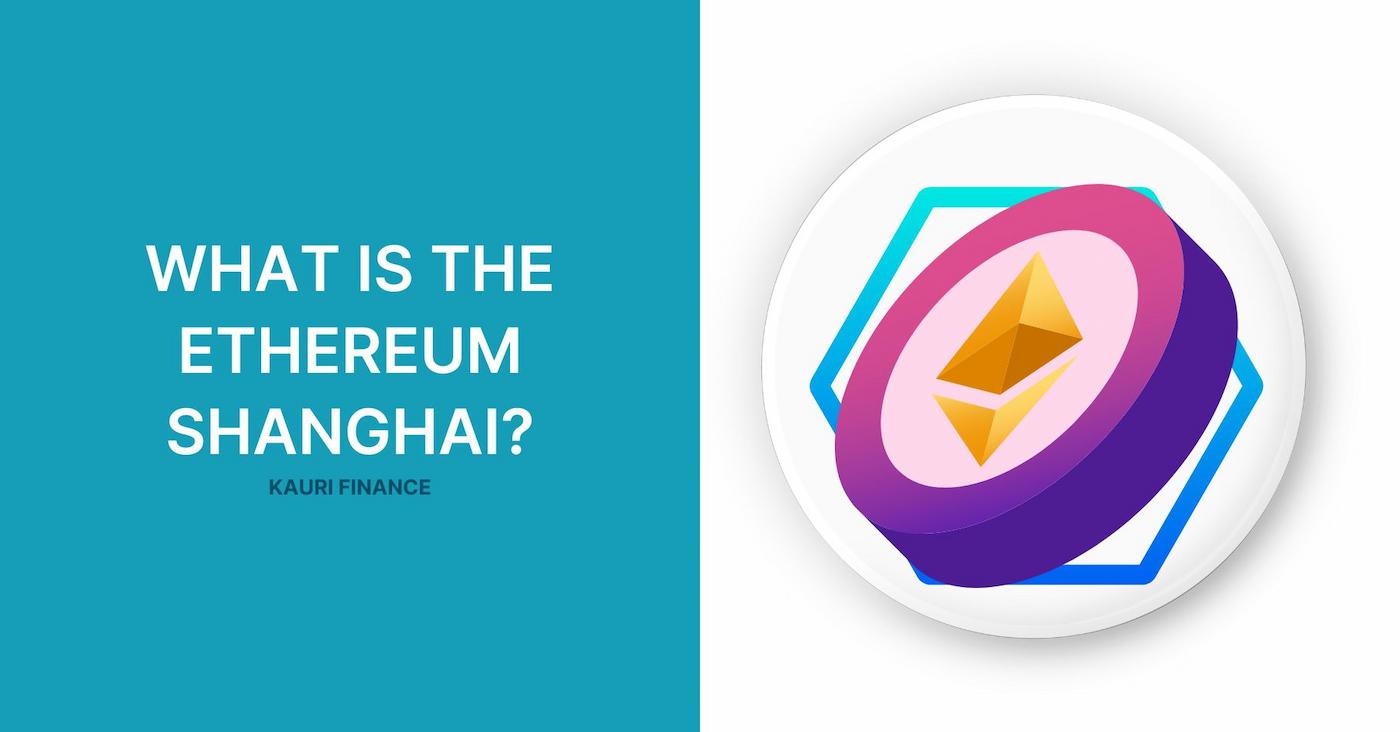
What Is Ethereum Shanghai?

The recent transition of the Ethereum network from Proof of Work (PoW) to Proof of Stake (PoS) was a significant change that promises a more robust and scalable structure. Against the backdrop of these major changes, the Shanghai Update looks like an extremely important step, especially for Ethereum stakers. Amid these pivotal changes, the Shanghai upgrade emerges as a crucial development, especially for Ethereum stakers. This update is particularly noteworthy as it introduces the long-awaited functionality for withdrawing staked ETH, addressing one of the most significant limitations since the PoS transition. In this article, we delve into the details of the Shanghai upgrade, exploring its implications for the Ethereum community and its potential to reshape the landscape of Ethereum staking and overall network participation.
What's New in the Shanghai Upgrade?
One of the central features of the Shanghai upgrade is the introduction of EIP-4895, which addresses a crucial gap in the PoS model—specifically, the ability for validators to withdraw their staked ETH. Until now, ETH staked on the Beacon Chain has been locked, with no option to withdraw, whether for trading or security purposes. This has been a point of contention and a significant risk factor for participants in Ethereum's staking process.
The Shanghai update resolves this by enabling withdrawal functionality, thereby enhancing the liquidity and accessibility of staked ETH. This change is expected to not only provide greater flexibility for current stakers but also attract new participants who may have been hesitant to stake their ETH due to the previously illiquid nature of the staking process.
What is Ethereum Staking?
Ethereum staking is a crucial mechanism within the network’s Proof of Stake (PoS) consensus model, where individuals lock up their ETH to support network operations and security. By staking ETH, users effectively become validators, taking on the role of verifying transactions and creating new blocks. This process not only secures the network but also ensures its integrity and ongoing functionality.
- Validators play a critical role in the PoS system: they are responsible for storing data, processing transactions, and adding new blocks to the blockchain. In return for their services, validators receive rewards in the form of ETH, which are derived from network fees. This incentivization model is designed to encourage participation and maintain a robust network.
The introduction of the Shanghai update brings a significant enhancement to the staking process. With this update, validators now have the ability to withdraw their staked ETH, addressing a major limitation in the earlier stages of Ethereum’s PoS implementation. This flexibility improves the liquidity of staked assets and is likely to encourage broader participation in Ethereum’s staking system.
Ethereum Improvement Proposals (EIPs)
Ethereum Improvement Proposals (EIPs) are essential components in the evolution of the Ethereum network. They allow developers to suggest, discuss, and implement changes to the network's protocols. EIPs can cover a wide range of areas, including core protocol specifications, client APIs, and contract standards.
The process of creating an EIP involves drafting a proposal that outlines the intended changes and the rationale behind them. This proposal is then submitted for review to the Ethereum community, where it undergoes rigorous scrutiny and discussion. If the community reaches a consensus on the value and viability of the EIP, it moves forward to the implementation stage.
A specific example relevant to the Shanghai update is EIP-4895. This proposal is pivotal as it introduces the functionality for validators to withdraw their staked ETH. The significance of EIP-4895 lies in its potential to enhance the flexibility and attractiveness of Ethereum’s staking model, thereby fostering greater security and participation within the network. This EIP represents a direct response to community feedback and is a testament to Ethereum's adaptive and progressive governance model.
Implications of the Shanghai Update
Shanghai Update holds significant implications for individuals actively staking Ethereum (ETH). The introduction of withdrawal functionality for staked ETH is a major enhancement, directly addressing one of the most notable restrictions in Ethereum's staking model. This change allows validators to retrieve their staked capital and accrued rewards, providing much-needed liquidity and flexibility.
The ability to withdraw staked ETH could have a profound impact on Ethereum's market dynamics. For one, it may encourage more users to participate in staking, knowing they can access their funds if needed. Additionally, this update could stabilize or even increase the price of ETH by potentially reducing the amount of ETH sold on the open market, as stakers may choose to re-stake their rewards rather than sell them.
Liquid staking platforms, which have provided solutions for staking without locking assets, might see a shift in user behavior. These platforms might need to adjust their offerings or enhance features to remain attractive to users who now have greater flexibility directly through the Ethereum network. Overall, the update is likely to stimulate growth and innovation within the broader Ethereum staking ecosystem.
Market Reaction
The market's reaction to the Shanghai update could vary widely. Traders and investors might view the increased liquidity as a positive development, potentially leading to a more active and vibrant ETH market. On the other hand, the immediate availability of previously locked funds could lead to increased selling pressure, impacting ETH's price in the short term.
From a broader economic perspective, the update enhances the appeal of Ethereum as a staking platform, which could attract more institutional and retail investors to the ecosystem. This influx could increase demand for ETH, offsetting any potential downward pressure on prices due to withdrawals. Moreover, the update solidifies Ethereum's transition to a fully functional PoS system, which is likely to be viewed favorably by those concerned with sustainability and energy consumption.
Conclusion
The Shanghai update represents a pivotal development in Ethereum’s evolution, particularly enhancing the functionality and appeal of its Proof of Stake mechanism. By enabling the withdrawal of staked ETH, the update not only addresses a significant liquidity issue but also broadens the appeal of Ethereum staking.
